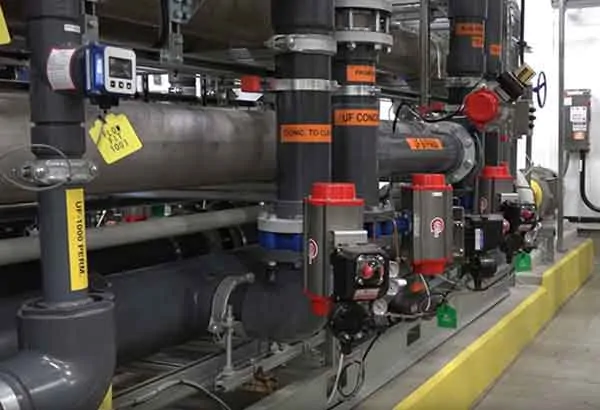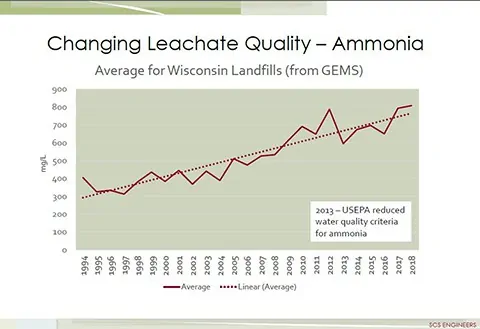


Complementing the Interstate Technology and Regulatory Council’s – ITRC, PFAS Technical and Regulatory Guidance, the website now has ITRC Per- and Polyfluoroalkyl Substances – PFAS, and Risk Communication Fact Sheets available. The site and updated content replace older fact sheets with more detailed information and useful for those who wish to understand the discovery and manufacturing of PFAS, information about emerging health and environmental concerns, and PFAS releases to the environment with naming conventions and federal and state regulatory programs.
SCS Engineers’ professionals recommend further reading to understand specific chemicals or subgroups of chemicals under study to comprehend PFAA behavior in the environment. There are appropriate tools to develop a site-specific sampling and analysis program and considerations for site characterizations following a PFAS release.
We combine ITRC resources and our own to compile an updated library that we hope you find helpful. You can always contact one of our local Liquids Management or Landfill professionals too.
PFAS Behavior in the Environment
PFAS Concerns
PFAS Evaluations
PFAS Remediation
The Interstate Technology and Regulatory Council (ITRC) is a state-led coalition working to reduce barriers to the use of innovative air, water, waste, and remediation environmental technologies and processes. ITRC documents and training can support quality regulatory decision making while protecting human health and the environment. ITRC has public and private sector members from all 50 states and the District of Columbia and is a program of the Environmental Research Institute of the States (ERIS), a 501(c)(3) organization incorporated in the District of Columbia and managed by the Environmental Council of the States (ECOS).
ITRC Goals
SCS Engineers
Per- and poly-fluoroalkyl substances (PFAS) are receiving increasing attention from regulators and the media. Within this large group of compounds, much of the focus has been on two long-chain compounds that are non-biodegradable in the environment: PFOS (perfluorooctane sulfonate) and PFOA (perfluorooctanoic acid).
Long detected in most people’s bodies, research now shows how “forever chemicals” like PFAS accumulate and can take years to leave. Scientists have even tracked them in biosolids and leafy greens like kale. Recent studies have linked widely used PFAS, including the varieties called PFOA and PFOS, to reduced immune response and cancer. PFAS have been used in coatings for textiles, paper products, cookware, to create some firefighting foams and in many other applications.
Testing of large public water systems across the country in 2013 through 2015 found PFAS detected in approximately 4 percent of the water systems, with concentrations above the USEPA drinking water health advisory level (70 parts per trillion) in approximately 1 percent (from ITRC Fact Sheet). Sources of higher concentrations have included industrial sites and locations were aqueous film-forming foam (AFFF) containing PFAS has been repeatedly used for fire fighting or training. Source identification is more difficult for more widespread low-level PFAS levels.
With the EPA positioned to take serious action on PFAS in 2020 and beyond, regulators in many states have already started to implement their own measures, while state and federal courts are beginning to address legal issues surrounding this emerging contaminant. State actions have resulted in a variety of state groundwater standards for specific PFAS compounds, including some that are significantly lower than the USEPA advisory levels. These changes mean new potential liabilities and consequences for organizations that manufacture, use, or sell PFAS or PFAS-containing products, and also for the current owners of properties affected by historic PFAS use. If you operate a landfill or own a site with PFAS history this may be something you need to discuss and plan now.
Questions for property owners, property purchasers, and manufacturers include:
If PFAS treatment or remediation is required, a number of established options to remove PFAS from contaminated soil and groundwater are available, including activated carbon, ion exchange or high-pressure membrane systems. On-site treatment options, including in-situ or ex-situ alternatives, the management of reject streams with concentrated PFAS waste where applicable, are also available.
Do You Need Help?
Need assistance with PFAS or have an idea that you would like to discuss? Contact , or find the SCS Engineers location nearest you.
This week, 271 chrome plating facilities in California received an order from the California State Water Resources Control Board (SWRCB) mandating the investigation of Per- and poly-fluoroalkyl substances (PFAS) at their facilities. Up until 2016, fume suppressants used by these facilities often contained perfluorooctanesulfonate (PFOS), a variety of PFAS.
PFAS consists of thousands of entirely man-made chemicals characterized by a strong bond between fluorine and carbon that have many manufacturing and industrial applications. They are also found in consumer products such as carpeting, apparel, personal care items, and fast food paper wrappings. PFAS is used in firefighting foam, wire and cable coatings, and in the manufacturing of semiconductors. Health studies have linked small doses of PFAS, including PFOS, to reduced immune response, raised cholesterol, and cancer.
PFAS has been widely used within the chrome plating industry as a chemical fume suppressant. According to the National Association for Surface Finishing, it’s estimated that 30 – 40% of surface finishing facilities have chromium electroplating processes. The beginning of its use in the industry goes back to the 1950s and most recently has been required by many states to reduce harmful hexavalent chrome air emissions. Because the chrome plating industry is so highly regulated and monitored, the required use of PFAS in the plating process is well known and therefore has been “on the radar” of state and federal enforcement agencies as potential sources for PFAS pollution.
For more information or assistance with PFAS in the chrome plating industry in California, contact Senior Geologist Lyn Love at 562-426-9544 or .
For help assessing and managing PFAS nationwide please contact for assistance.
Per- and poly-fluoroalkyl substances (PFAS) are receiving increasing attention from regulators and the media. Within this large group of compounds, much of the focus has been on two long-chain compounds that are non-biodegradable in the environment: PFOS (perfluorooctane sulfonate) and PFOA (perfluorooctanoic acid). Long detected in most people’s bodies, research now shows how “forever chemicals” like PFAS accumulate and can take years to leave. They persist even when excreted through urine. Scientists have even tracked them in biosolids and leafy greens like kale. Recent studies have linked widely used PFAS, including the varieties called PFOA and PFOS, to reduced immune response and cancer. PFAS have been used in coatings for textiles, paper products, cookware, to create some firefighting foams and in many other applications.
Testing of large public water systems across the country in 2013 through 2015 found PFAS detected in approximately 4 percent of the water systems, with concentrations above the USEPA drinking water health advisory level (70 parts per trillion) in approximately 1 percent (from ITRC Fact Sheet.) Sources of higher concentrations have included industrial sites and locations were aqueous film-forming foam (AFFF) containing PFAS has been repeatedly used for fire fighting or training.
Source identification is more difficult for more widespread low-level PFAS levels. For example, in Madison, Wisconsin, PFAS have been detected in 14 of 23 municipal water supply wells, but the detected concentrations were below the USEPA’s health advisory levels for PFOA and PFOS. A study of potential PFAS sources near two of the Madison wells identified factories, fire stations, landfills, and sludge from sewage treatment plants as possible sources, but did not identify a specific source.
With the EPA positioned to take serious action on PFAS in late 2019 and 2020, regulators in many states have already started to implement their own measures, while state and federal courts are beginning to address legal issues surrounding this emerging contaminant. State actions have resulted in a variety of state groundwater standards for specific PFAS compounds, including some that are significantly lower than the USEPA advisory levels. These changes mean new potential liabilities and consequences for organizations that manufacture, use, or sell PFAS or PFAS-containing products, and also for the current owners of properties affected by historic PFAS use.
Questions for manufacturers, property owners, and property purchasers include:
If remediation is required, a number of established options to remove PFAS from contaminated soil and groundwater are available, including activated carbon, ion exchange or high-pressure membrane systems. On-site treatment options, including the management of reject streams where applicable, are also available.
Do You Need Help?
Need assistance with PFAS or have an idea that you would like to discuss? Contact for more information.
Use these resources to explore more about PFAS each is linked to helpful articles and information.
Forester University recently hosted Dr. Viraj deSilva P.E., BCEE of SCS Engineers in their well-received educational webinar “All About PFAS: Emerging Contaminants That Are Everywhere.”
Dr. deSilva teaches you all you need to know to protect yourself and your community from PFAS—from generation, formation, and environmental release to sampling and analysis.
He provides an in-depth overview of the treatment of PFAS in sources that do not currently have maximum containment levels, such as landfill leachate, wastewater, surface water, and groundwater.
This course covers nomenclature, chemistry, sources, exposure, and future concerns as well as discusses the current regulatory status of these contaminants.
Learning Objectives
We encourage our readers to see the webinar on Forester University’s website. Credits: 1 PDH / 0.1 CEU. Forester offers registration savings to groups. Register here.
Additional Resources with Links – click to read
Managing landfill leachate and wastewater treatment are increasingly challenging and costly for landfill owners and operators. In some cases, publicly owned treatment works (POTWs) are required to impose limitations on liquids received at their facilities, resulting in increased charges, or the POTW could refuse to permit or process the leachate wastewater altogether. These developments are due in part to more stringent discharge requirements and the shift to newer disinfection technology that has limited the POTW’s ability to accept higher strength wastewaters. As a result, many facilities and landfill operators are facing higher costs and fewer options for disposal.
Another factor that affects landfills is the fact that the composition of leachate in landfills differs depending on the degree of leachate stabilization and a seasonal increase in quantity as well as on the influence of more frequent and higher intensity storms due to changing climatic conditions.
The single most influential factor on the volume of landfill leachate is precipitation. The most influential factor regarding leachate quality is that leachate typically contains high concentrations of organic compounds, ammonia and other forms of nitrogen, metals, and dissolved solids. Ammonia concentrations in the leachate, from many landfills, are increasing every year as shown in the graph below. Compounding the high strength concentrations of constituents found in landfill leachate are the emerging contaminants of concern including per and poly-fluoroalkyl substances (PFAS) that are now a significant concern with the U.S. EPA and many state environmental agencies.

Top 5 Questions and Answers When Selecting the Right Leachate Treatment Option for Your Landfill
Without considering leachate recirculation and a host of other factors, this blog provides answers to frequently asked questions regarding the analysis of treatment options for landfill leachate.
ONE: What is an example of a typical work scope of a leachate treatment options analysis?
TWO: What information is necessary to begin assessing the on-site treatment options of leachate?
THREE: What constituents should I expect to have analyzed to assess the options for leachate wastewater treatment?
FOUR: What are some of the issues taken into account regarding treating ammonia-N in leachate/wastewater?
FIVE: What are some examples of the options for how to effectively treat ammonia-N in leachate on-site?
We hope you find our SCS Advice from the Field blogs helpful. For more information, we recommend these articles and resources: